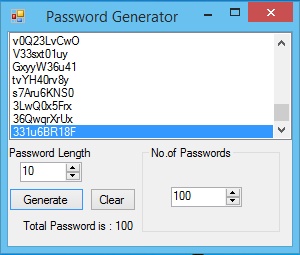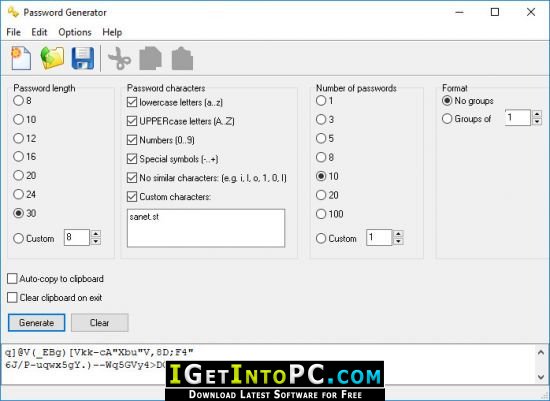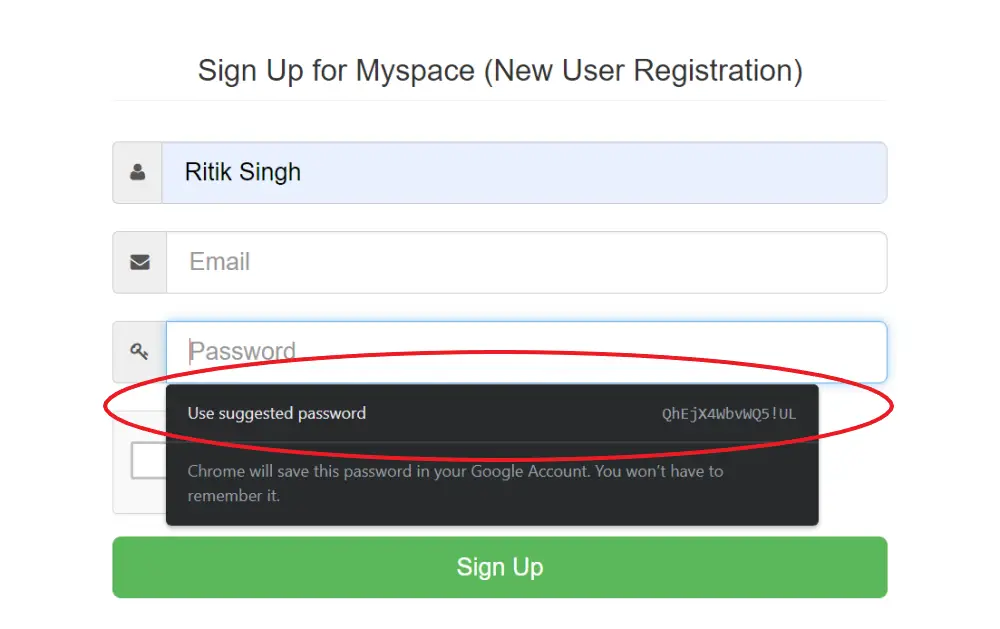


Behind the scenes, it's actually powered by our web developer tools that are used by millions of people every month. This random password generator was created by me and my team at Browserling.

In the end, all passwords in the output array are joined by a newline via join('\n') function. If the count option is larger than one, this process is repeated until the required number of passwords have been created. Then, this password is added to the output array.
Automatic password generator online plus#
For example, if you select lowercase letters and digits as the alphabet, then it will set the variable alphabet to the string abcdefghijklmnopqrstuvwxyz plus 0123456789 and it will call alphabet.charAt() function together with Math.random() function to select symbols at random positions from this alphabet until it has selected length (password's length specified in options) characters. It lets you select password's complexity by choosing the alphabet of characters that will be used for generating passwords. This random password generator works entirely in your browser and is written in JavaScript. How Does This Random Password Generator Work?

Experts advise to never share your passwords, but if you absolutely must, we highly recommend sharing your passwords securely with the help of a password manager.If you selected "Custom Alphabet" from the dropdown above, then enter the characters to generate your password(s) from here. Sharing your passwords insecurely through email, text message, Microsoft Teams, WhatsApp, Slack, Discord, etc., leaves you at a higher risk of having your accounts compromised. This attack works on the assumption that people often use the same username and password across multiple sites.ĭon't share passwords in unencrypted formats A credential stuffing attack is when a cybercriminal takes leaked credentials from one site and uses them on multiple sites in an attempt to gain access to your accounts. Reusing the same passwords puts you at risk of a cyberattack, such as credential stuffing. At least one special character, such as ! # ?.At least 12 characters, and preferably more.Strong passwords should be long, complex and difficult to remember. Your first line of defense against cybercriminals breaking into your online accounts and stealing your personal data is to use strong, one-of-a-kind passwords. Password Best Practices to Follow Don't use personal information in your passwordsĮasy passwords, such as password123 or your dog’s name, are simple to remember but also simple for cybercriminals to crack. Strengthen your organization with zero-trust security and policiesĪchieve industry compliance and audit reporting including SOX and FedRAMPĪutomate credential rotation to drastically reduce the risk of credential-based attacks Restrict secure access to authorized users with RBAC and policies Initiate secure remote access with RDP, SSH and other common protocols Manage and protect SSH keys and digital certificates across your tech stack Privileged Session ManagementSecurely manage applications and services for users, teams and nodes.Protect critical infrastructure, CI/CD pipelines and eliminate secret sprawlĪchieve visibility, control and security across the entire organization Password SharingSecurely share passwords and sensitive information with users and teamsĮnable passwordless authentication for fast, secure access to applications.Seamlessly and quickly strengthen SAML-compliant IdPs, AD and LDAP Protect and manage your organization's passwords, metadata and files


 0 kommentar(er)
0 kommentar(er)
